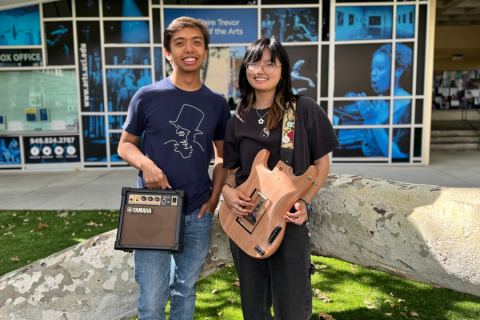UC Irvine Students Merge Music and Engineering in E-SONIC Instrument Competition
The competition promises an evening of innovative performances on Monday, May 19, 2025, at 6:30 p.m. in Winifred Smith Hall
Now in its second year, UC Irvine’s Samueli School of Engineering, Claire Trevor School of the Arts and the Pacific Symphony present E-SONIC: Engineering-Symphonic Orchestra New Instrument Competition. Student teams from across UC Irvine have collaborated to develop brand new musical instruments that will premiere in concert at 6:30 p.m. on Monday, May 19, 2025, in Winifred Smith Hall. This year’s lineup features an array of instruments, from using a harp with a digital interface to a glove that makes sounds through intuitive hand gestures. Read more about the teams competing in E-SONIC Below.
Dynamic Ultralight Beam Synth (DUBS)
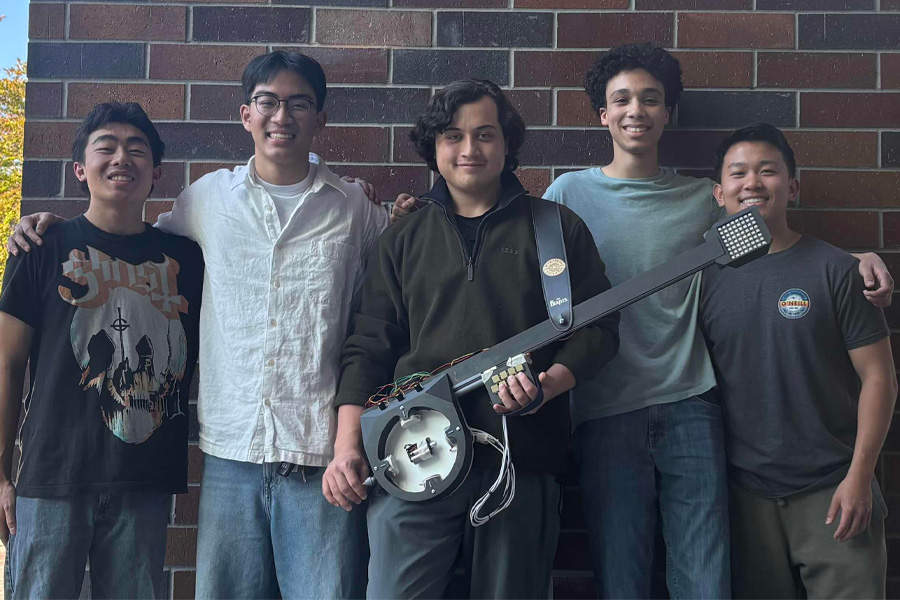
Image: (left to right) Kevin Meng Xiong, Dylan Nam Nguyen, Zachary Lee, Ibrahim Hussein and Devin Duong posing with DUBS.
DUBS is a sonically and aesthetically retro futuristic instrument that embodies the competitors’ passion for fun music. By harnessing the power of light and lasers, DUBS creates an entertaining audiovisual interface with clear visual cues for seamless playability. Fusing the modalities of a Japanese electronic musical synthesizer known as the otamatone and a hurdy-gurdy string instrument, DUBS offers a uniquely ergonomic and intuitive musical experience.
Team members: Kevin Meng Xiong (mechanical and aerospace engineering), Dylan Nam Nguyen (chemical and biomolecular engineering), Zachary Lee (political science), Ibrahim Hussein (electrical engineering) and Devin Duong (chemical and biomolecular engineering).
Belted Box of Bruces

Image: Belted Box of Bruces.
The Belted Box of Bruces is a motorized acoustic instrument that blends elements of the guitar and the piano. As the name suggests, its three main components are the “Bruces,” a hollow wooden box and a finned belt. Strings are arranged similarly to a guitar, with one end anchored to the wooden box and the other to a Bruce, a custom-built key that functions like a piano key. When a Bruce is pressed, it lowers the string until it contacts the continuously rotating finned belt. The motion of the belt’s fins striking the string produces sound, much like a guitar pick. The resulting vibrations resonate inside the wooden box and exit through a sound hole, creating a rich acoustic tone.
Team members: Christian Cao (biomolecular engineering), Warren Lin (Electrical Engineering and Computer Science) and Cormac McDevitt (chemical and biomolecular engineering).
Adaptive Harp with Musical Instrument Digital Interface (MIDI) Integration
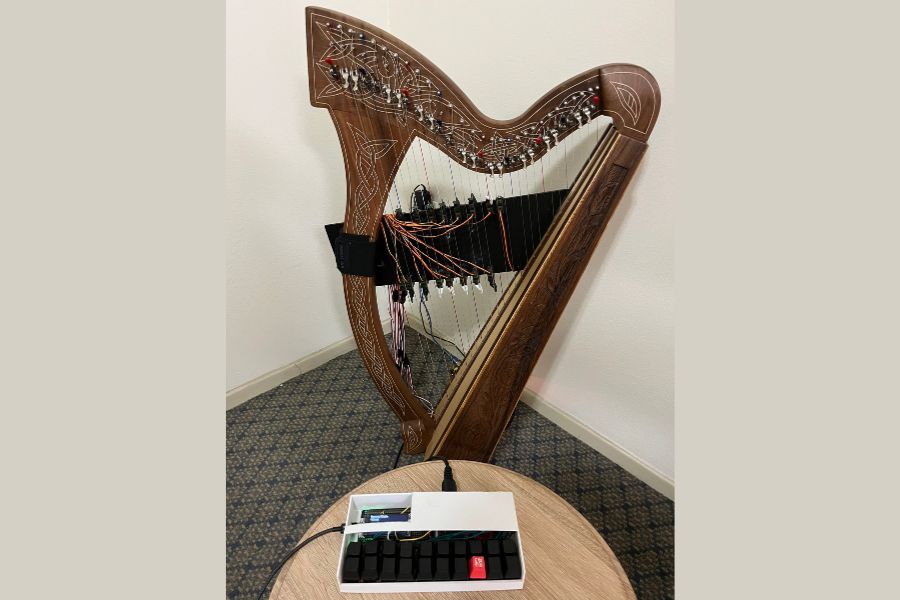
Image: Adaptive Harp with MIDI Integration.
The iteration of the harp takes the ancient instrument to new heights. The custom MIDI keyboard and servo pluckers provide a new way of engaging with the instrument in ways previously not possible by hand, enabling automated strokes and even the ability to play completely on its own. Beginner or a full-on music producer, the adaptive harp allows users of all ranges of musical abilities to enjoy creating melodies that comfort the soul.
Team members: Ashray Nair (Computer Engineering), Arjun Sivakumar (Computer Engineering), Zarif Hossain (Computer Science and Engineering) and Samarth Shah (Computer Science and Engineering).
The EXTAR
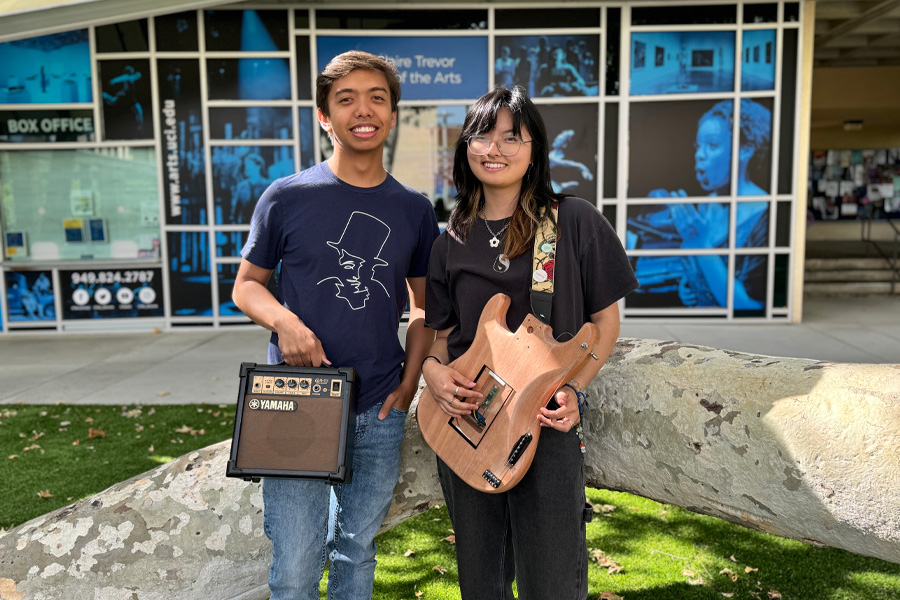
Image: (left to right) Yasper De Jong and Aejin Yi with their project, The EXTAR (expression and guitar).
The EXTAR (expression and guitar) is a one-string guitar with a touchpad for frequency modulation.
Team members: Yasper De Jong (computer science and engineering) and Aejin Yi (Art).
Lumerin
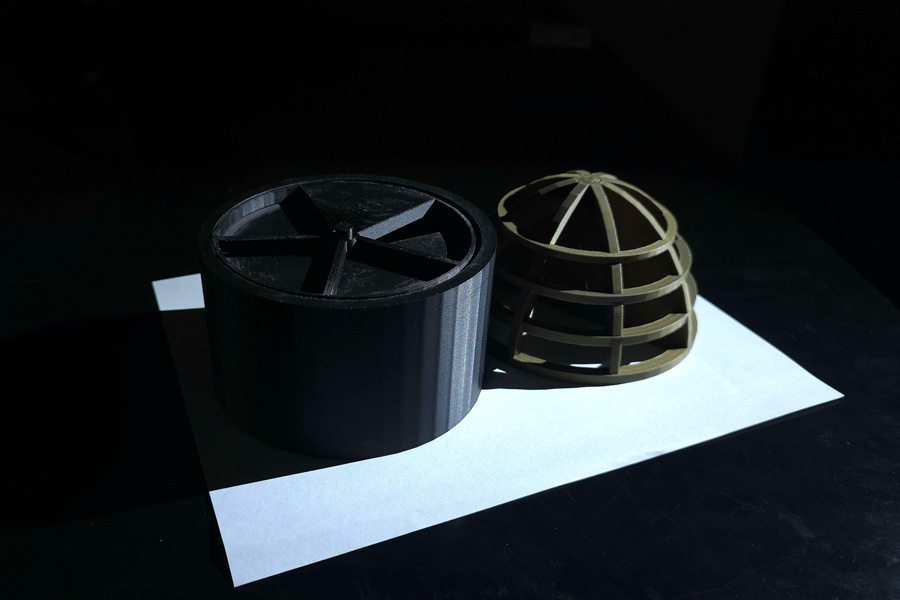
Image: Lumerin.
Driven by the desire to improve accessibility and promote uniform musical expression, the Lumerin combines light and haptic feedback to enable both the performer and the audience to experience a dynamic light show and "feel" the music beyond just sound. Drawing inspiration from the theremin, the instrument features two adjustable wells that control volume and pitch, giving users the flexibility to interact with the instrument in a way that suits their needs and preferences.
Team members: Brandon Vole (mechanical and aerospace engineering), Rudy Iyer (music), Meghana Sagare (mechanical and aerospace engineering), Gina LeRow (electrical engineering and computer science), Caitlyn Duenas (electrical engineering and computer science) and Athena Nguyen (biomedical engineering).
The Glove Band
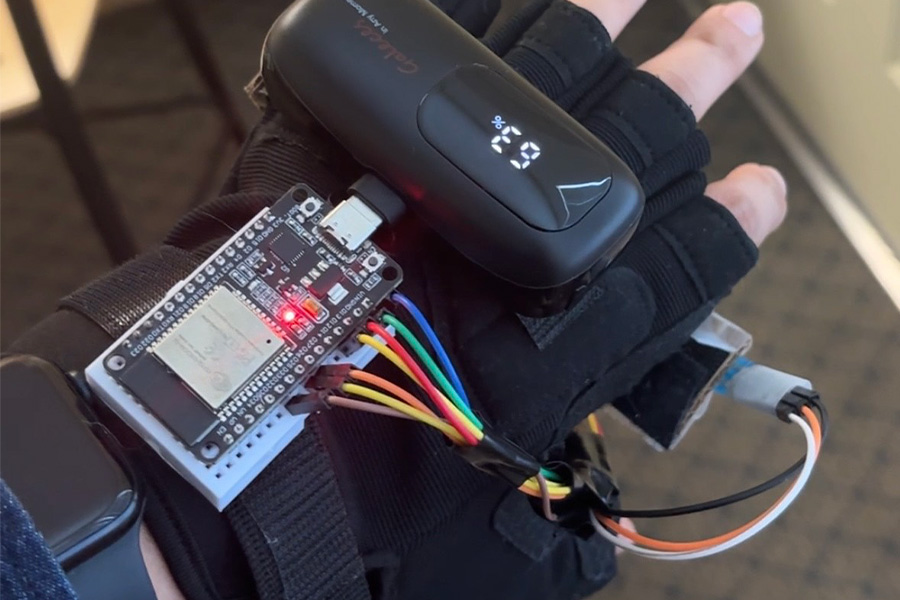
Image: The Glove Band.
The Glove Band is a pair of wearable gloves for musical instruments that enables users to control sound through intuitive hand gestures. It bridges the gap between traditional instrument playing and digital sound synthesis by using motion detection and pressure-sensitive controls. The system generates real-time sound output for a seamless musical experience.
Tangqin Zhu (computer engineering), Canting Zhu (computer engineering), Zhengyang Zhuang (computer engineering), Thomas Yeung (computer engineering) and Aarav Awasthy (computer engineering).
To RSVP and for more information about E-SONIC, visit here. To learn more about Claire Trevor School of the Arts, visit arts.uci.edu. To learn more about the Samueli School of Engineering, visit engineering.uci.edu.

